how to used machinery washing and sorting vegetables and fruits
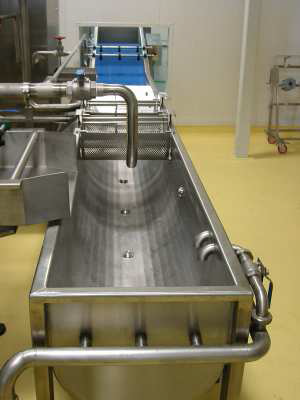
Washing, sorting and grading machines for vegetables and fruits
First: Machines for washing fruits and vegetables
The process of trading fruits and vegetables after harvest in several stages, namely sorting, cleaning, gradation, packaging, transport and storage and cleaning is one of the most important of these processes.
The process of cleaning means those processes where unwanted materials are removed and attached to the fruit surface for preparation for the marketing or manufacturing process.
These substances are undesirable because they are harmful to human health, cause rapid damage to the fruit or reduce its quality and thus reflect their marketing value and may render them unfit for human consumption.
The washing process is carried out for one or more of the following purposes:
1- Softening the suspended solids for fruits to facilitate their separation.
2 - get rid of the dust lingering on the surface of the fruits and thus reduce the amount of microorganisms such as fungi and bacteria, which makes the fruits suitable for human consumption.
3 - Protect the fruits from the rapid damage caused by the pollution of the surface.
4. Disposal of pesticide residues and toxic chemicals.
5. Improve the appearance and economic value of the food product.
6. Legal necessity Where food control and consumer protection laws provide for cleaning of a food product.
Cleaning methods
There are four main ways:
1. Cleaning using natural means.
2. Cleaning using chemical means.
3. Cleaning using electrical means.
4. Thermal cleaning.
Cleaning machines depend on one or more of the above four methods, but there are two basic ways to clean the most widespread and safe for fruits and consumers are dry cleaning and wet cleaning.
First: dry cleaning
The dry cleaning method is simple and low in cost and also leaves the fruit dry. However, they are not as effective as the fruits of horticultural crops, so they are usually used as initial cleaning followed by washing.
Dry cleaning methods:
Dry cleaning methods vary depending on the drying mechanism, but can be summarized in the following four ways:
1- Cleaning by sifting:
Separation is based on sifting based on differences in natural properties (such as size, weight, color, and shape) between food and unwanted materials.
2- Vibration cleaning:
This method is used with leafy vegetables (such as spinach), where leafy vegetables are separated from the foreign material by shaking, thus gaining the unwanted material strength to separate it from the leaves of the plant.
3. Cleaning by friction:
This method eliminates undesirable materials by friction more strongly than the strength of the cohesion of these materials leading to separation of these materials from the surface of the fruit, and can be cleaned by friction using roller brushes or rotary rubber belts with a rough surface dry it dry Or wet (in the presence of water).
4 - Electromagnetic cleaning:
This method is used mainly to clean grains containing a high percentage of iron filings and empty shell wrappers for cereals ..... etc.
Electromagnetic properties are used to clean seeds and grains from impurities. This method depends on the difference between seeds and impurities in natural properties (such as shape, size, weight and surface texture).
This method is performed by passing the grain on a rubber conveyor loaded with a positive charge and at the top of the path is an electrode charged with a negative charge. During the passage of the seeds on the path occurs the attraction between the negative shipments of seeds and the positive charge of the path and when the passage of the seeds under the electrode occurs between the charge between the positive charge of the seeds and the charge of the negative electrode, leading to the separation of grains from the walk and fall immediately due to large weight, but impurities are less weight and remain attached to the process And then fall down. This method is also used to clean tea leaves from impurities and dust.
Second: Wet cleaning (washing):
Wet cleaning is much more efficient than dry cleaning, especially with the fruits that grow under the surface of the soil or grow in an atmosphere contaminated with dust, dust, chemical and microbial contaminants.
The process of washing fruits and vegetables should be taken into consideration to preserve the fruits in their natural state while removing the largest amount of unwanted material with the least consumption of water.
1- Washing by soaking:
The simplest method of washing is the process of soaking in the wash basins to get rid of the highly sticky or sticky material that covers the surface of the fruit and in some equipment, the soaking process is an initial washing process to prepare the fruits to enter the following stages of washing:

2. Washing by floating
This method depends on the difference in density between grains and undesirable material when the immersion of the grains in the water float strange substances on the surface of the water and grain.
But this method is similar to the way of soaking in terms of consumption of a large amount of water, and requires after washing drying grain to maintain the quality and appearance of the outside.
This method depends on the difference in density between grains and undesirable material when the immersion of the grains in the water float strange substances on the surface of the water and grain.
But this method is similar to the way of soaking in terms of consumption of a large amount of water, and requires after washing drying grain to maintain the quality and appearance of the outside.
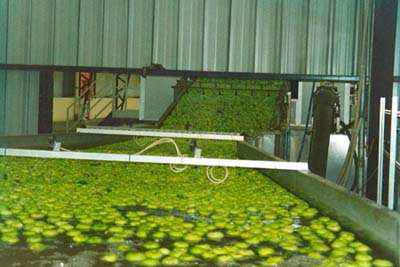
3. Washing by vibration:
Vibration facilitates the separation of unwanted material from the surface of the fruit. This method is used with vegetable seeds such as beans and peas.
The vibration-based washing machines consist of a vibrating sieve that moves a frequency movement and draws its movement from a decentralized wheel. The water is dripped from the top of the sieve through a number of sprayers. The unwanted material is disposed of. The wash water is collected in the bottom of the sieve. With disposal to get rid of them.
4- Washing by spraying
The use of spraying is one of the most common methods of washing. This method helps to quickly get rid of undesirable materials, especially if the spraying process uses a means to call the fruits such as brush brushes. The use of brushes with sprinklers reduces the need for the process of soaking for a long time, especially with the fruits that There is no high viscosity or adhesion on the surface of the fruit.
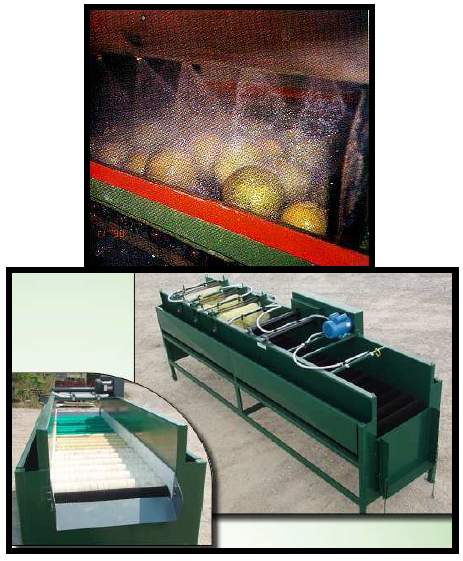
5 - Washing through the roller roller (washing machine barrel).
This machine is suitable for leafy vegetables such as spinach and mallow. The machine consists of a perforated rotary drum with a slight inclination to allow the leaves of the washed plant to pass through the cylinder from the feed hole to the exit slot. In the center of the cylinder there is a tube with sprinklers on which the water falls on the leaves of the plant. The water is discharged after being collected in a basin
Roller roller.
6- Ultrasonic washing:
Ultrasonic waves are waves with a frequency higher than 16 kHz. This method relies on the use of ultrasonic frequencies of frequencies ranging from 20-100 kHz in the soaking basin, which causes the vibration and stirring of water in the wash basins, which helps to separate the unwanted material from the fruits.
Detergents used in washing
Solvents include:
a. water
B. Soap
C. Organic solvents
2 - alkali such as:
a. SODUIM hydroxide
B. Potassium hydroxide
C. Aluminum hydroxide
3. Acids such as:
a. Hydrochloric acid
B. Sulfuric acid
4 - neutral salts such as: sodium.
5 - disinfectants
Purification of water consumed in washing and reuse:
Filters can be used to purify the water from the washing process for re-use in the washing process. This water contains undesirable materials such as sludge, plant residues, insecticides as well as chemicals such as fertilizers, pesticides, microbes and microorganisms. Water by filters for reuse again. These filters purify water up to 80% so that they can be reused in fruit soaking ponds.
There are a few factors that affect the process of washing them: -
1- Natural properties of fruits such as shape, size, color, and weight.
2. The properties of the exotic substances required to be removed in terms of their type, quantity and period of presence on the surface of the fruit.
3 - the forces of cohesion between grains of exotic matter and some of them and the forces of adhesion between the grains of exotic matter and the surface of the fruit.
4- Interaction between foreign matter and fruit surface.
5 - maximum time allowed for the survival of foreign substances on the outside of the crust of fruit without through the pores of the crust into the fruit.
6 - Electrical properties in the measurement process.
7 - Extent of the need for the use of detergent and disinfectant and its effect on the fruit and machine and the effect of its residues that are found on the fruit after rinsing (if any) on the health of the consumer.
8. The method of washing and machine used where cleaning methods vary depending on the type and shape of the product, they are either dry cleaning or washing.
Problems that limit the spread of washing machines in Egypt:
In spite of the importance of the washing process in raising the taste of the local consumer and meet the needs of the importer in addition to maintaining the safety of the product for a longer period, but there are problems that limit the spread of washing machines , including:
1. Laundry consumes a large amount of clean drinking water, which increases the cost of cleaning. Where the process of washing for canned food consumes about 7-8 m3 water / ton of food product and consumes about 5-8 m3 / ton of the crop.
2 - The cost of treating the water used in the laundry to reuse again increases the costs of the washing process by 30% -40%, which may be necessary in some places away from urbanization.
3 - The high prices of the purchase of washing machines, because most of them are imported machines with high productivity ranging from (5-20 tons / hour) and therefore only suitable for large factories, which leads to higher operating costs and maintenance costs.
4 - Lack of availability of washing machines with productivity that fit small factories and sorting stations and the gradualization and packaging.
Not after the process of washing the fruits of horticultural crops and vegetables Drying (drying) of the outer surface of the fruit to prevent the growth of microorganisms causing diseases on the surface of the fruit, especially if the surface of the fruit suffered scratches or wounds in addition to the process of surface drying make the fruits ready for the process of waxing and other Other trades.
The sorting and grading processes are carried out after the washing and cleaning operations of the crop, whether seeds or vegetable parts or fruits according to the specifications required for local consumption or exportation.
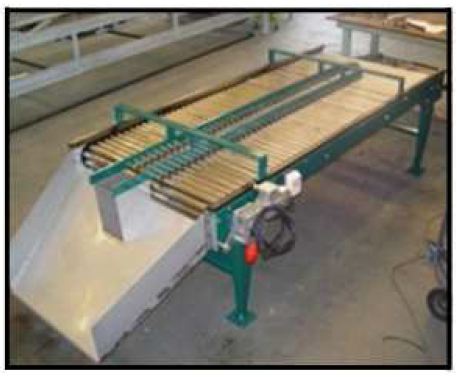
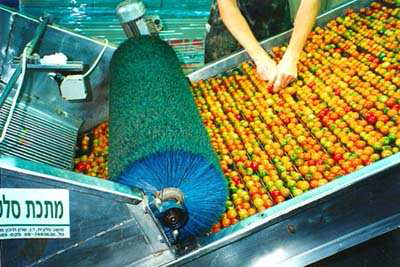
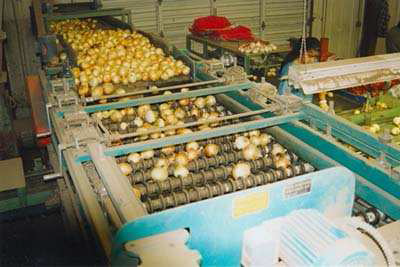



No comments